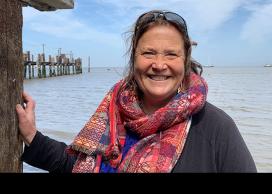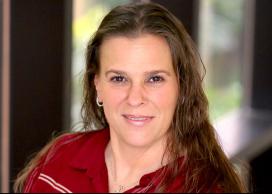Teaching in focus: Amanda Vincent
Learn more about the work of our educators at UBC

June 26, 2023
Name:
Amanda Vincent
My pronouns:
she/her
Title:
Professor
Department/Unit:
Institute for the Oceans and Fisheries
Location:
Vancouver
Year I started working at UBC:
2002
What first motivated you to become an educator?
I am passionate about saving the ocean but that's a big job and I won't be around forever. So it is really important to get others involved, the sooner the better. That means sharing knowledge and ideas – and passion – with younger people.
Tell us more about your work.
I love teaching my BIOL420 course (Ocean Conservation and Sustainability). The students are so engaged, and produce marvellous work. We have a flipped classroom; they watch lectures ahead of time and we explore ideas in the lecture slot (often with global leaders). I invite assignments – including reflections and exams – to be produced in written, video or podcast form. The submissions are commonly stunningly good. We have great field trips!
What inspired your particular approach to teaching?
I was inspired by working with my son (now 14), who is dyslexic, and seeing what his wonderful school could elicit from him with creative teaching. I used to be a pretty mainstream teacher, very anchored in written work and a stickler for spelling and grammar. My son helped me appreciate intelligence and understanding in all its guises and got me excited about the diverse ways people learn and grow.
What have you learned while teaching that has surprised you the most?
I have learned that the more supportive and relaxed I become, the harder and better the students work. It turns out that responding to individual circumstances with kindness seems to be a lot more productive than insisting on absolute deadlines, for example. I've also learned that most students are really creative – revealing all sorts of hidden talents in their work – if you let them loose from strict protocols.
What impact do you hope to have on your students?
I want my students to become passionate advocates for the ocean, wherever their careers and lives take them. I want them to understand that one person can make a difference in the world if they learn avidly and deploy knowledge quickly, effectively and strategically. In my course, I really hope they have fun, grow lots, and feel empowered to reach out of their comfort zone.
Are there any colleagues or mentors you’d like to acknowledge and why?
My son and his teachers introduced me to the value of "dyslexic thinking," an innovative and lateral way of looking at the world. Too much teaching measures success in how well students can replicate what they were taught, usually on paper. This smothers creative thinking. Given that about 15-20% of people are dyslexic, it was invaluable for me to discover different ways to support and measure learning, ways that actually work better for most people. I’m also grateful to Regina Bestbier for guiding me into new teaching approaches.
Learn more
- Our people
- Teaching and Learning
- Teaching in focus






